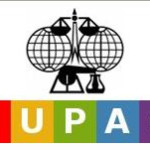- Industry: Chemistry
- Number of terms: 1965
- Number of blossaries: 0
- Company Profile:
The International Union of Pure and Applied Chemistry (IUPAC) serves to advance the worldwide aspects of the chemical sciences and to contribute to the application of chemistry in the service of people and the environment. As a scientific, international, non-governmental and objective body, IUPAC ...
Transition metal or Main Group compounds having only one type of ligand are said to be homoleptic, e.g. TaMe<sub>5</sub>.
Industry:Chemistry
A molecular entity that forms complexes with organic or inorganic guests, or a chemical species that can accommodate guests within cavities of its crystal structure. Examples include cryptands and crowns (where there are ion-dipole attractions between heteroatoms and positive ions), hydrogen-bonded molecules that form "clathrates" (e.g. hydroquinone and water), and host molecules of inclusion compounds (e.g. urea or thiourea). van der Waals forces and hydrophobic interactions bind the guest to the host molecule in clathrates and inclusion compounds.
Industry:Chemistry
Linear combination of atomic orbitals on an atom. Hybrid orbitals are often used in organic chemistry to describe the bonding molecules containing tetrahedral (sp<sup>3</sup>), trigonal (sp<sup>2</sup>), and digonal (sp) atoms.
Industry:Chemistry
Addition of water or of the elements of water (i.e. H and OH) to a molecular entity. For example, hydration of ethene:
<center>CH<sub>2</sub>=CH<sub>2</sub> + H<sub>2</sub>O → CH<sub>3</sub>CH<sub>2</sub>OH</center>
The term is also used in a more restricted sense for the process:
<center>A (gas) → A (aqueous solution)</center>
cf. the use of the term in inorganic/physical chemistry to describe the state of the ions of an electrolyte in aqueous solution.
Industry:Chemistry
The hydrogen bond is a form of association between an electronegative atom and a hydrogen atom attached to a second, relatively electronegative atom. It is best considered as an electrostatic interaction, heightened by the small size of hydrogen, which permits proximity of the interacting dipoles or charges. Both electronegative atoms are usually (but not necessarily) from the first row of the Periodic Table, i.e., N, O, or F. Hydrogen bonds may be intermolecular or intramolecular. With a few exceptions, usually involving fluorine, the associated energies are less than 20-25 kJ mol<sup>-1</sup> (5-6 kcal mol<sup>-1</sup>).
Industry:Chemistry
General name for the ion H<sup>+</sup> either in natural abundance, or where it is not desired to distinguish between the isotopes, as opposed to proton for <sup>1</sup>H<sup>+</sup>, deuteron for <sup>2</sup>H<sup>+</sup> and triton for <sup>3</sup>H<sup>+</sup>.
Industry:Chemistry
Water loving. The capacity of a molecular entity or of a substituent to interact with polar solvents, in particular with water, or with other polar groups.
Industry:Chemistry
The tendency of hydrocarbons (or of lipophilic hydrocarbon-like groups in solutes) to form intermolecular aggregates in an aqueous medium, and analogous intramolecular interactions. The name arises from the attribution of the phenomenon to the apparent repulsion between water and hydrocarbons. However, the phenomenon ought to be attributed to the effect of the hydrocarbon-like groups on the water-water interaction. The misleading alternative term "hydrophobic bond" is discouraged.
Industry:Chemistry
Shift of a spectral band to higher frequency or shorter wavelength upon substitution or change in medium. It is informally referred to as blue shift.
Industry:Chemistry
